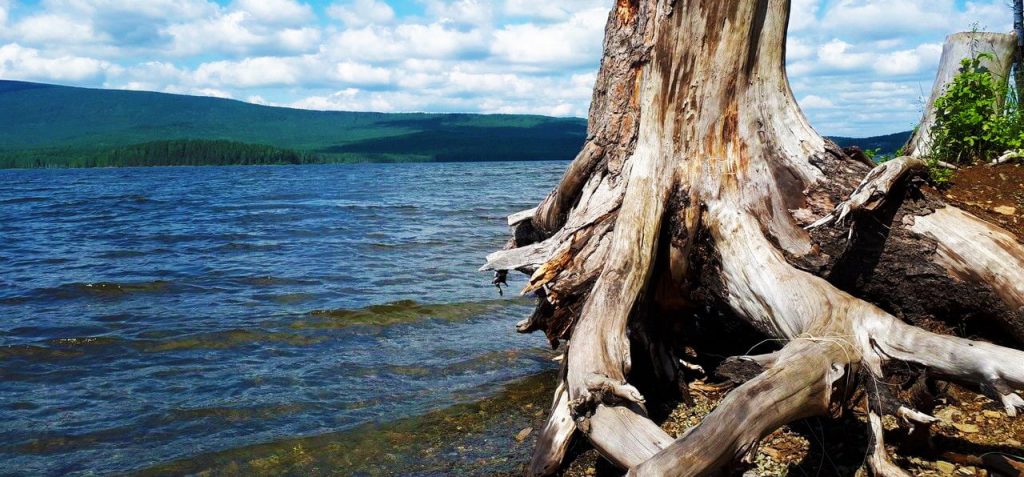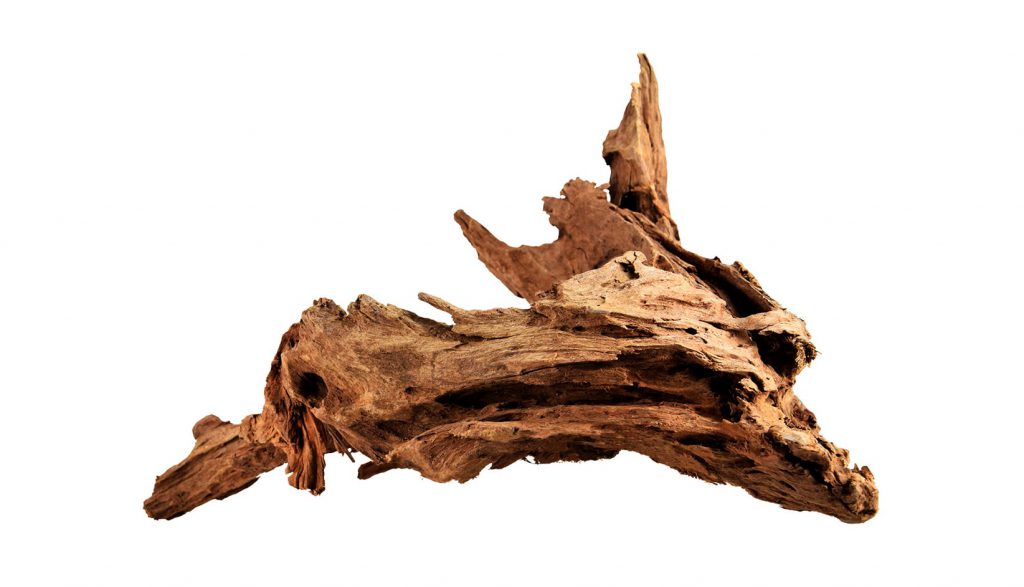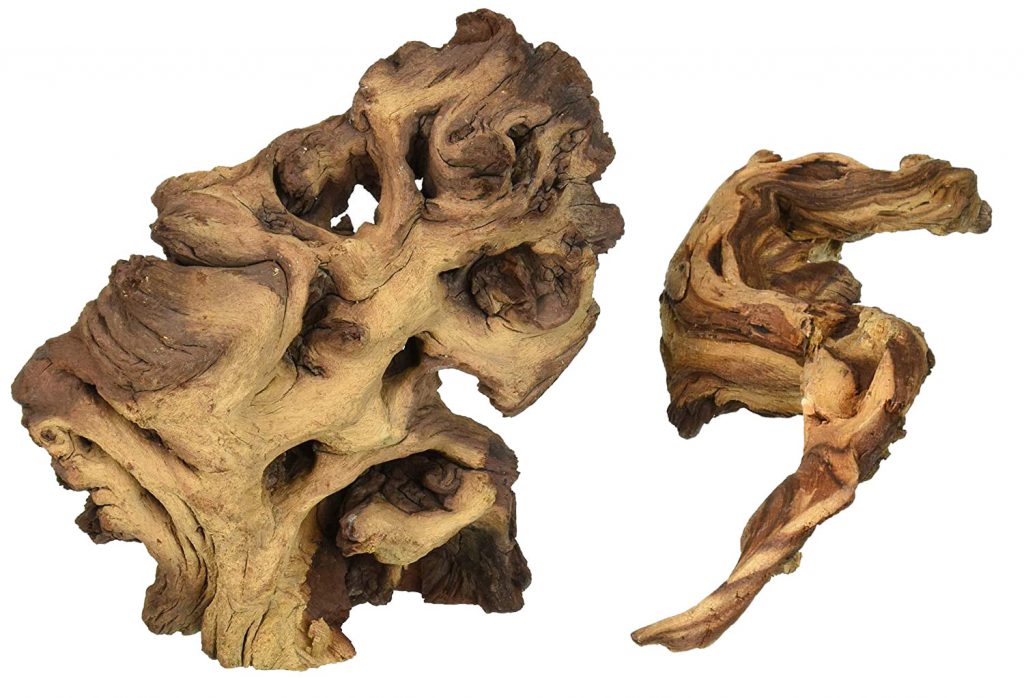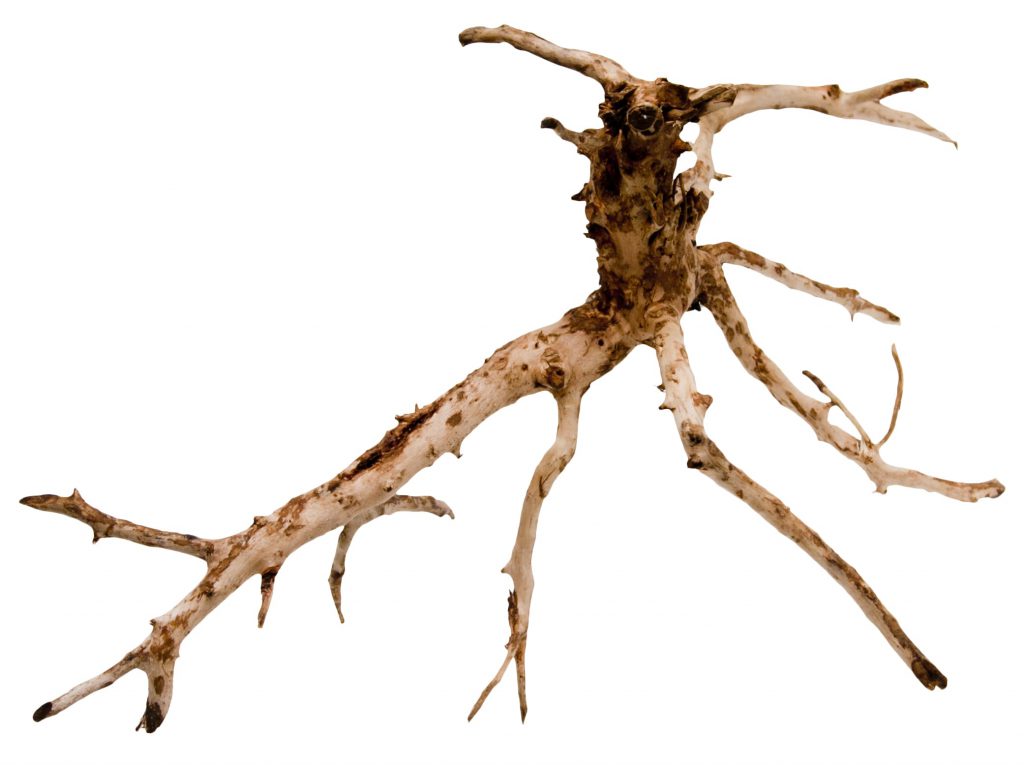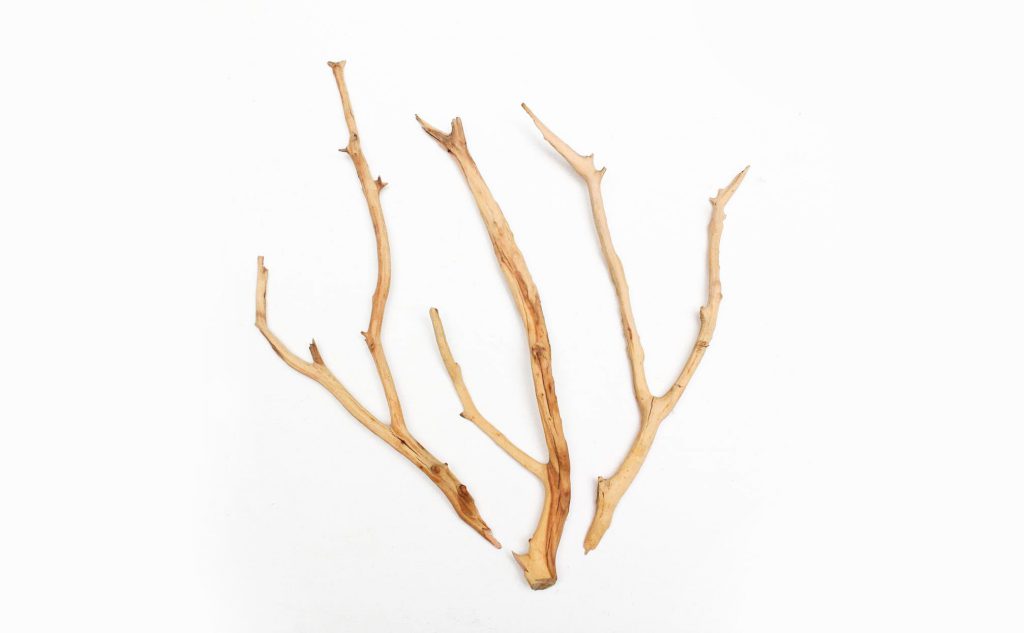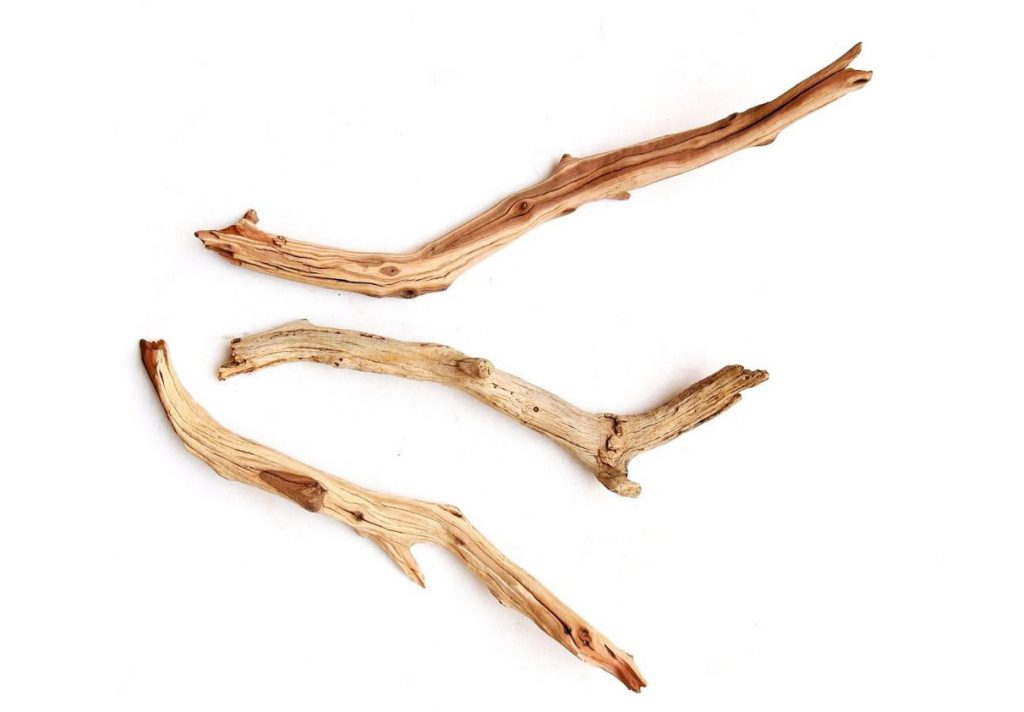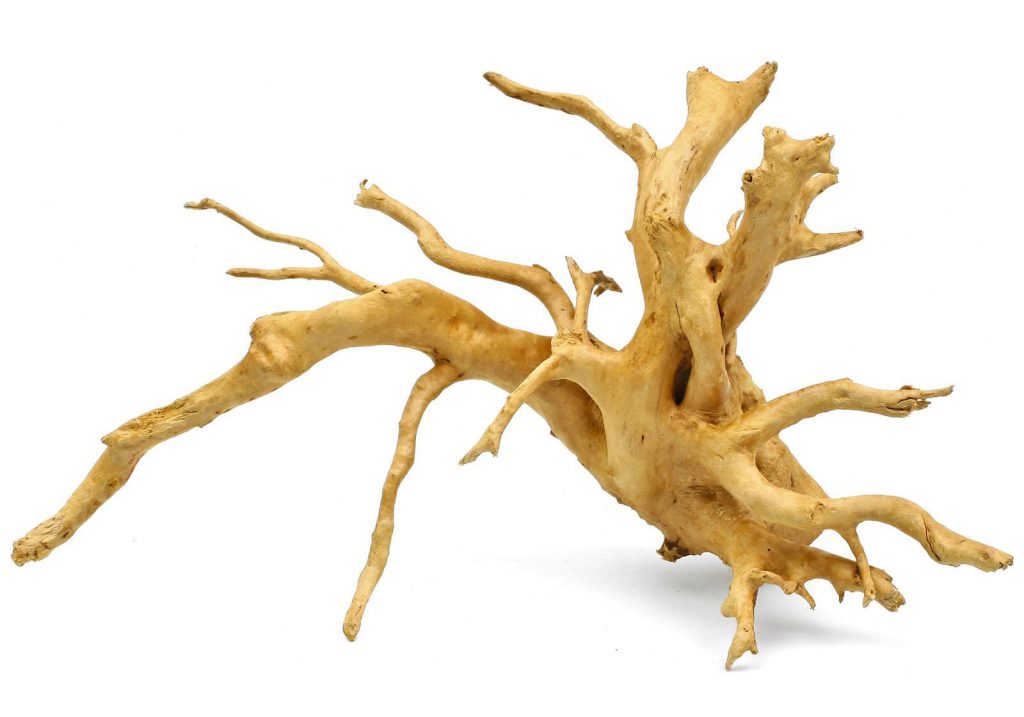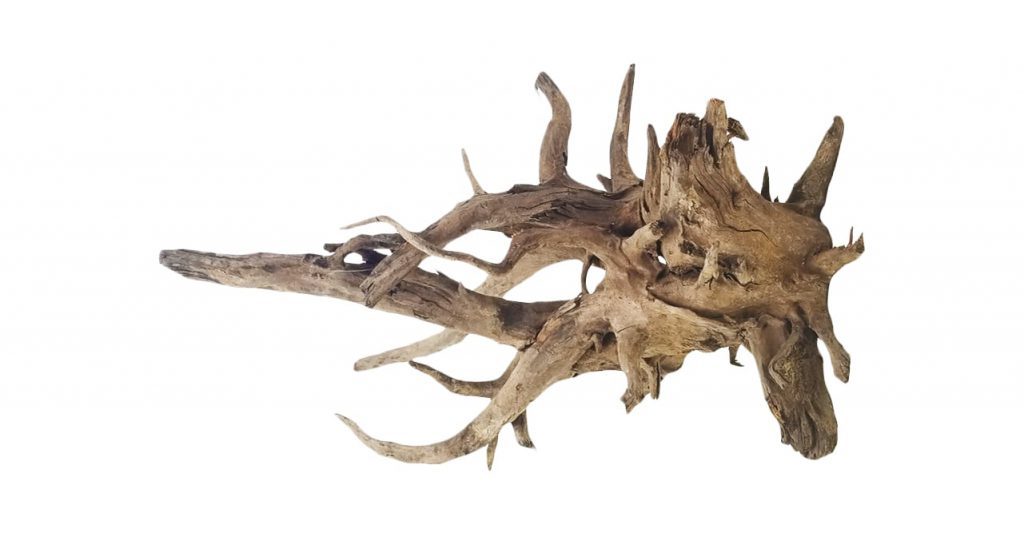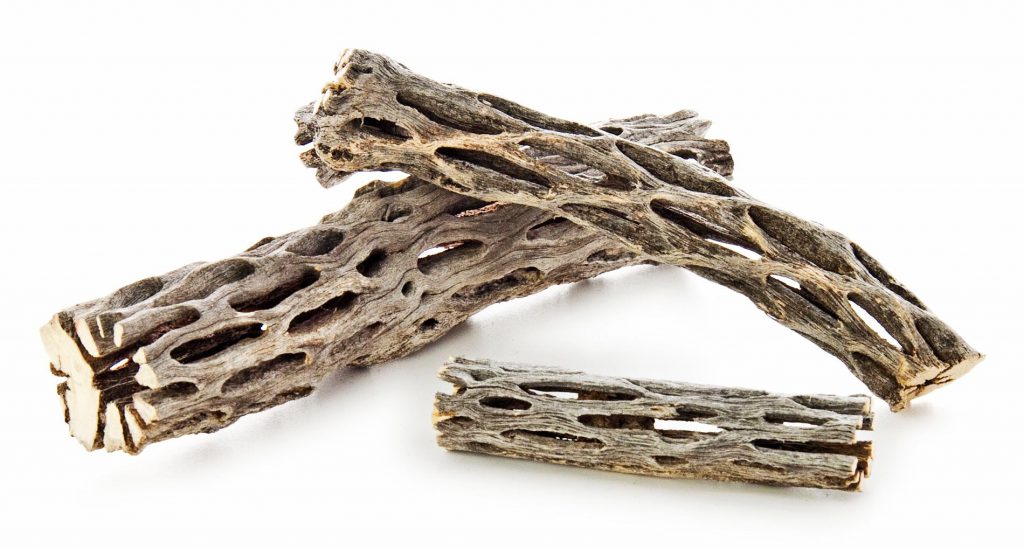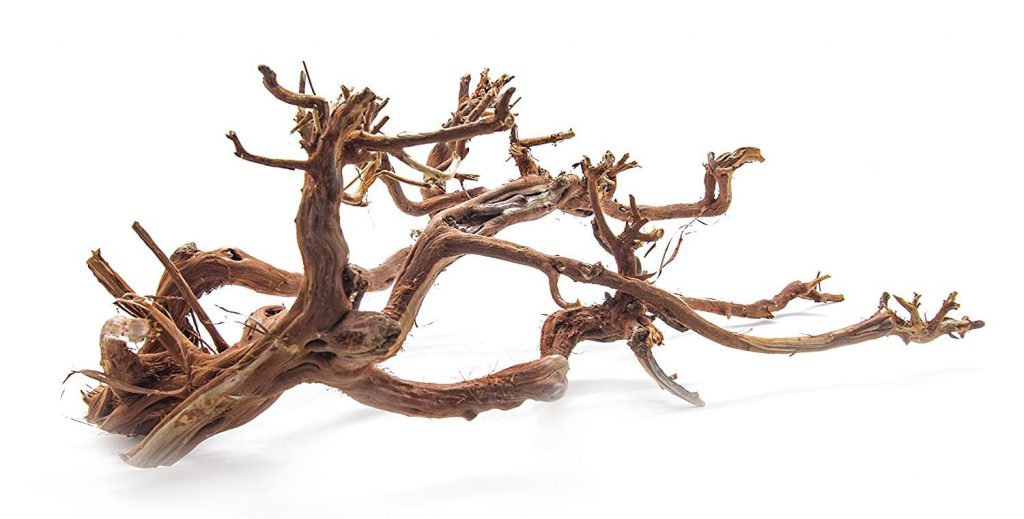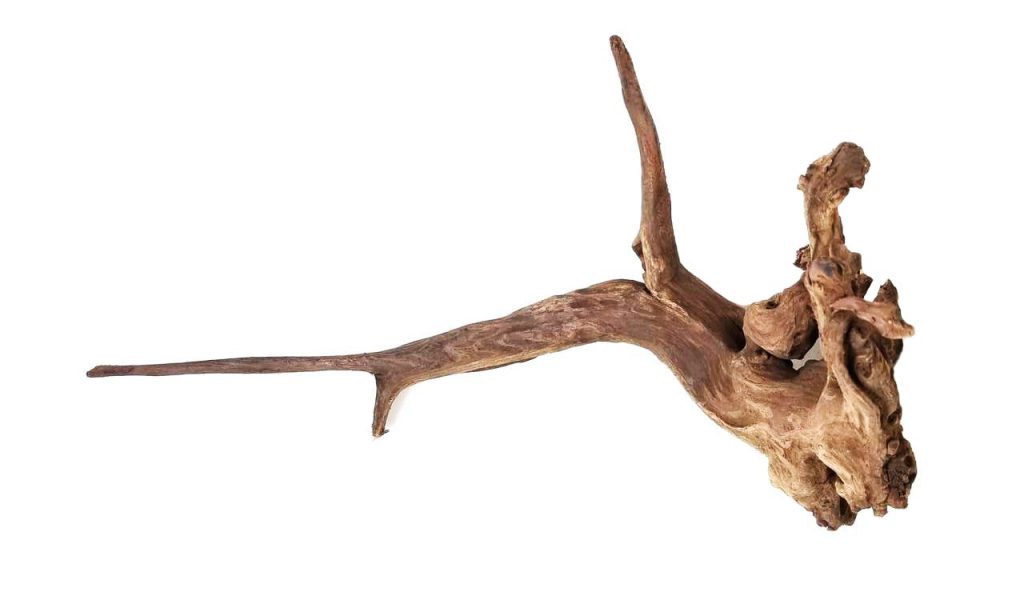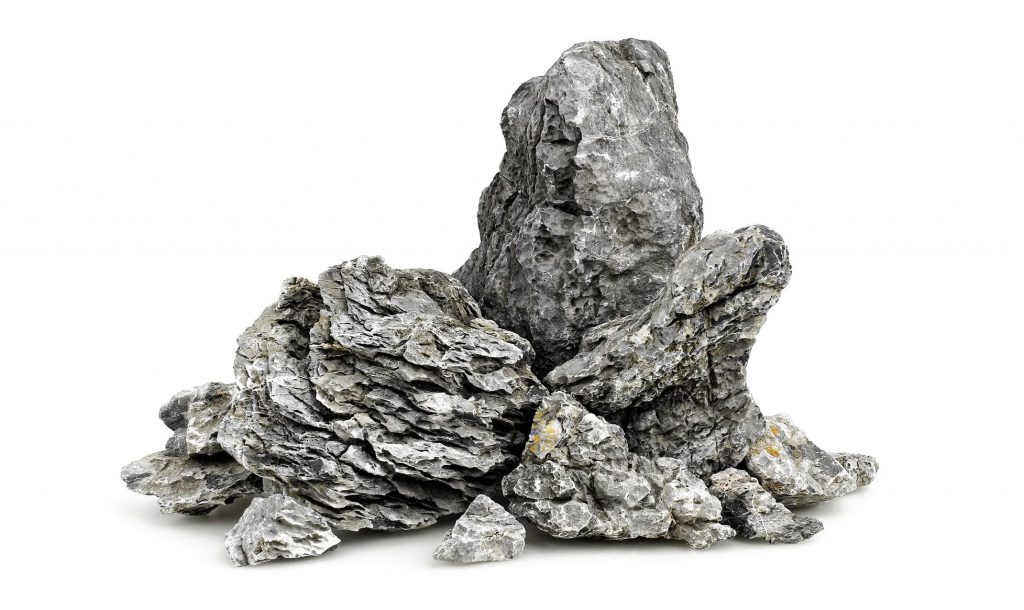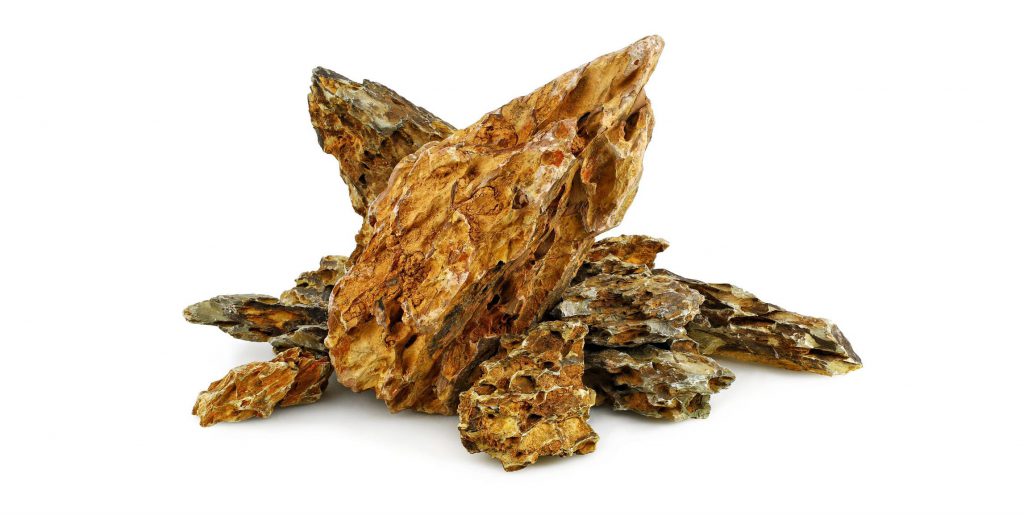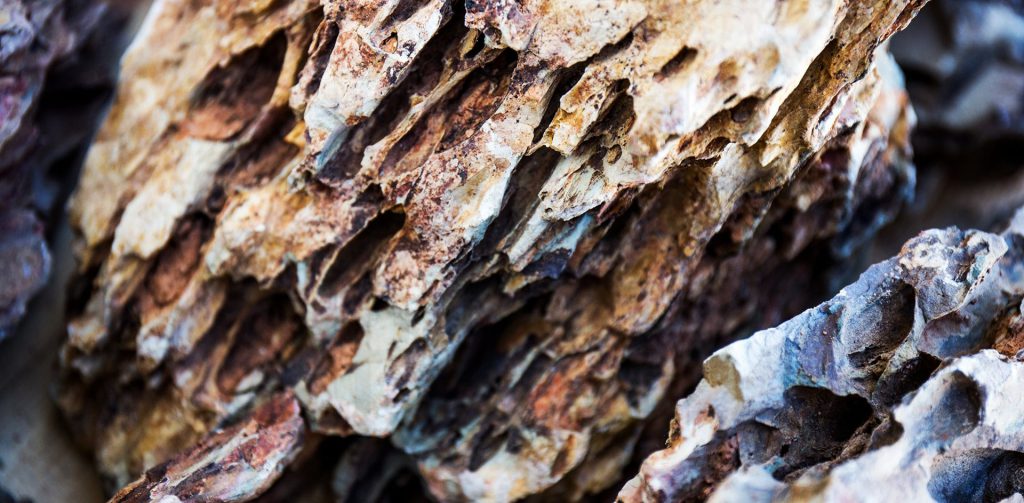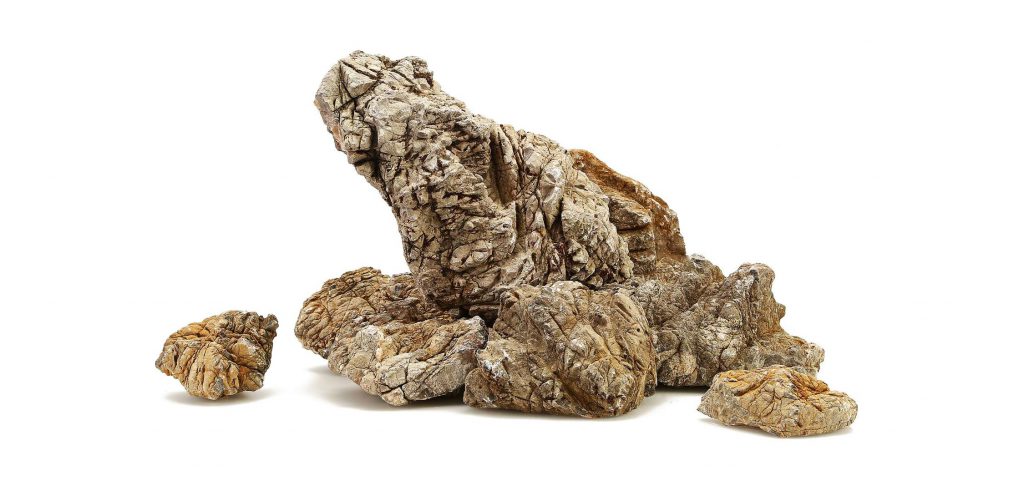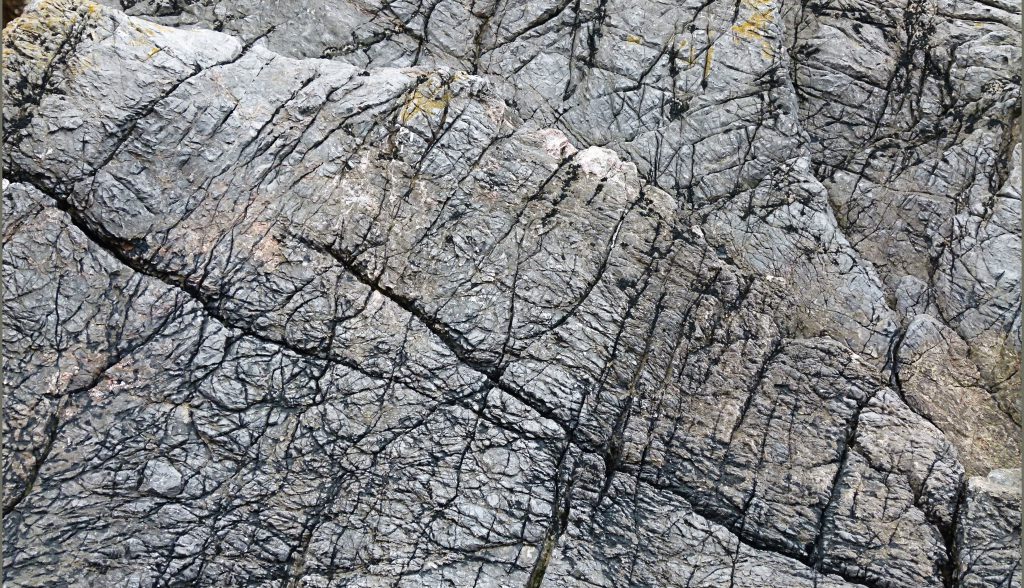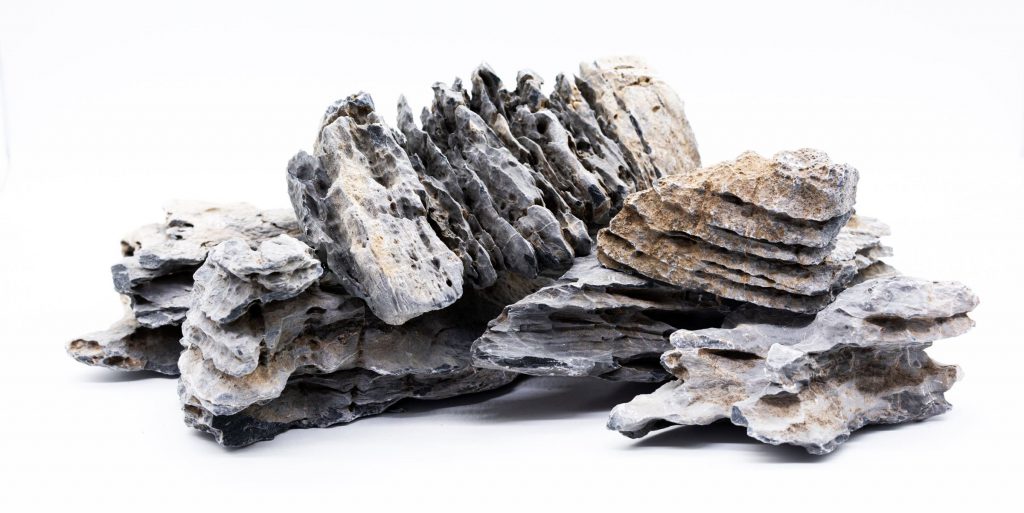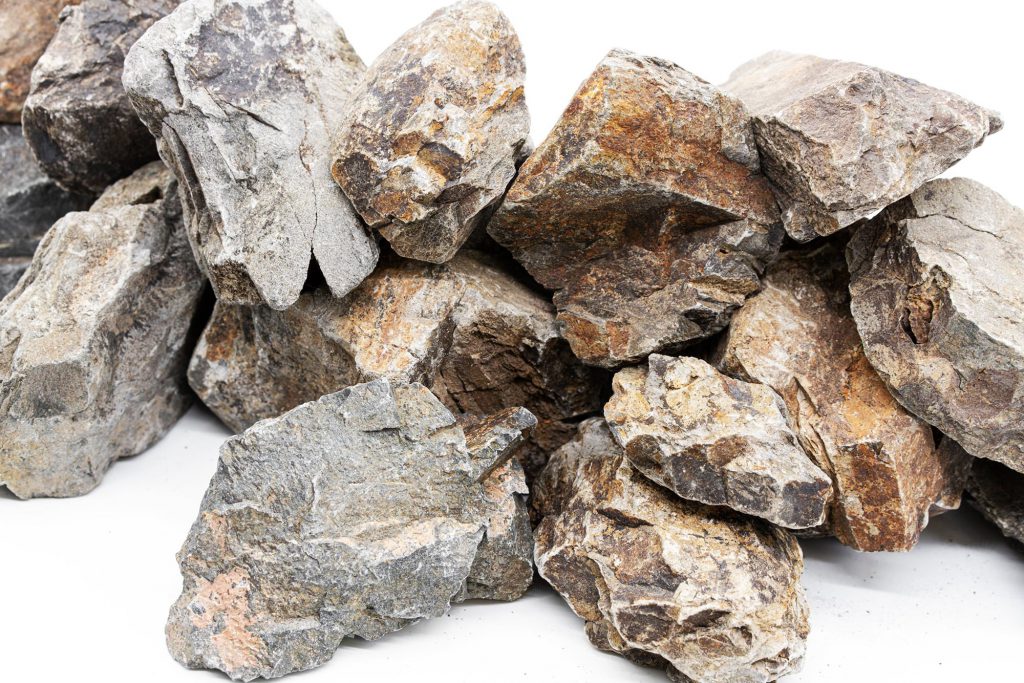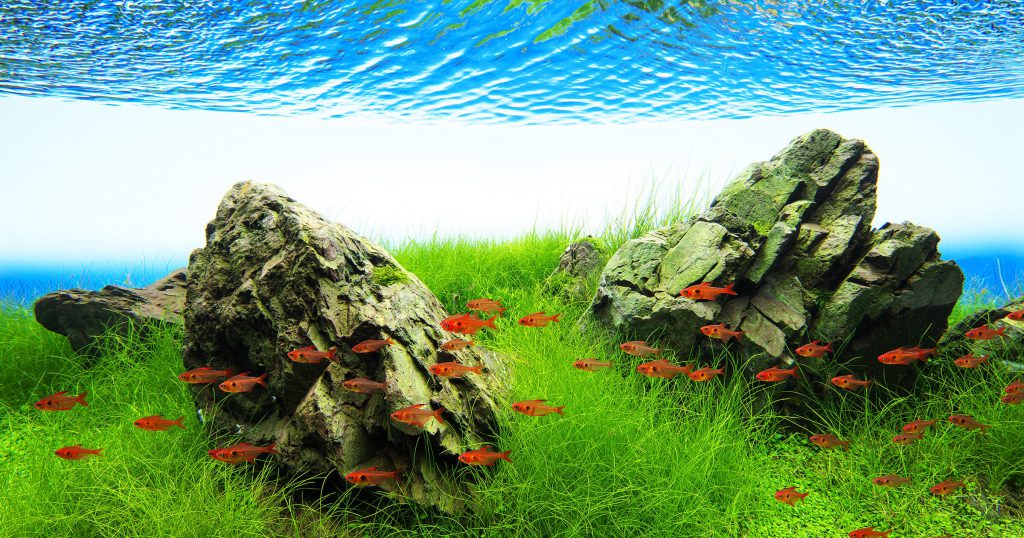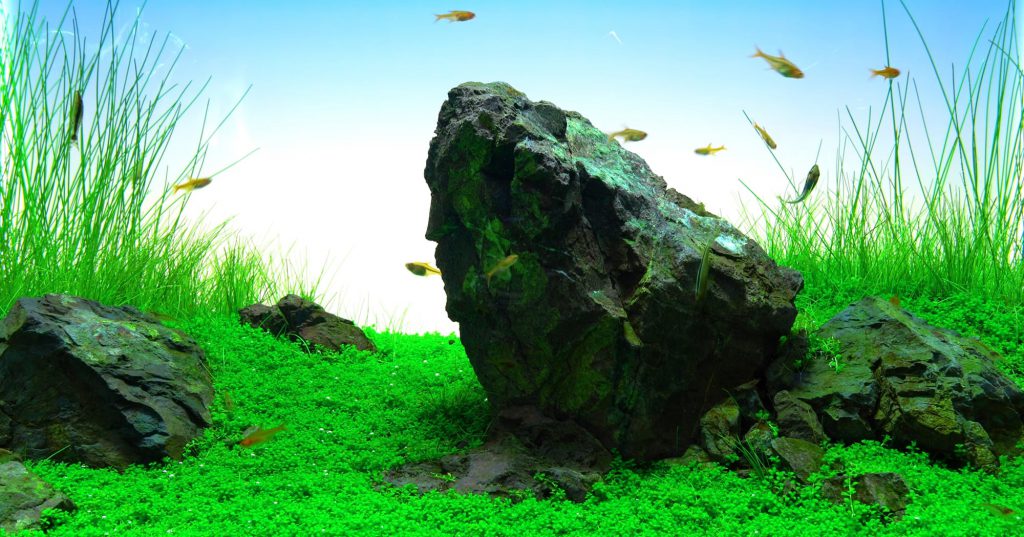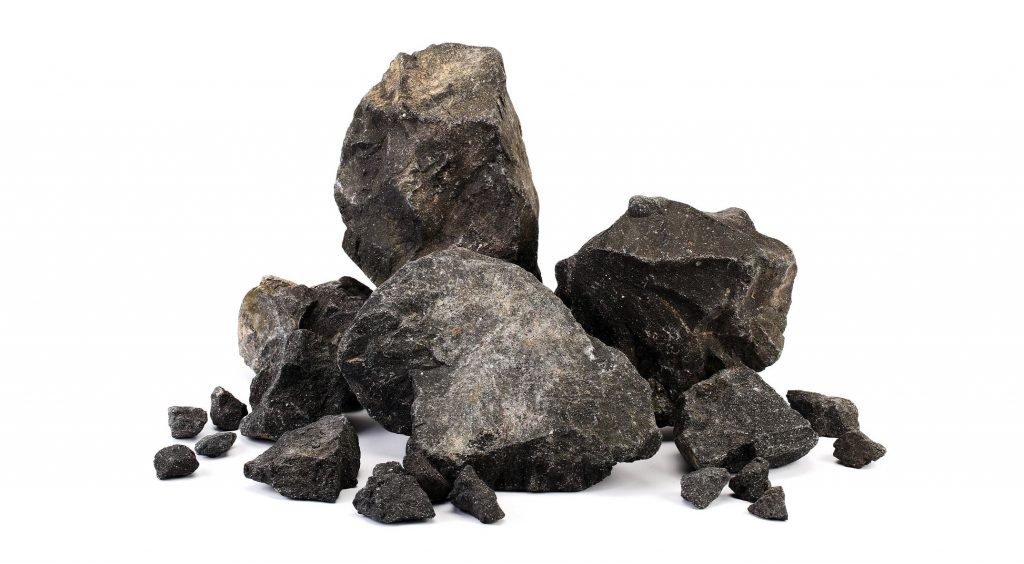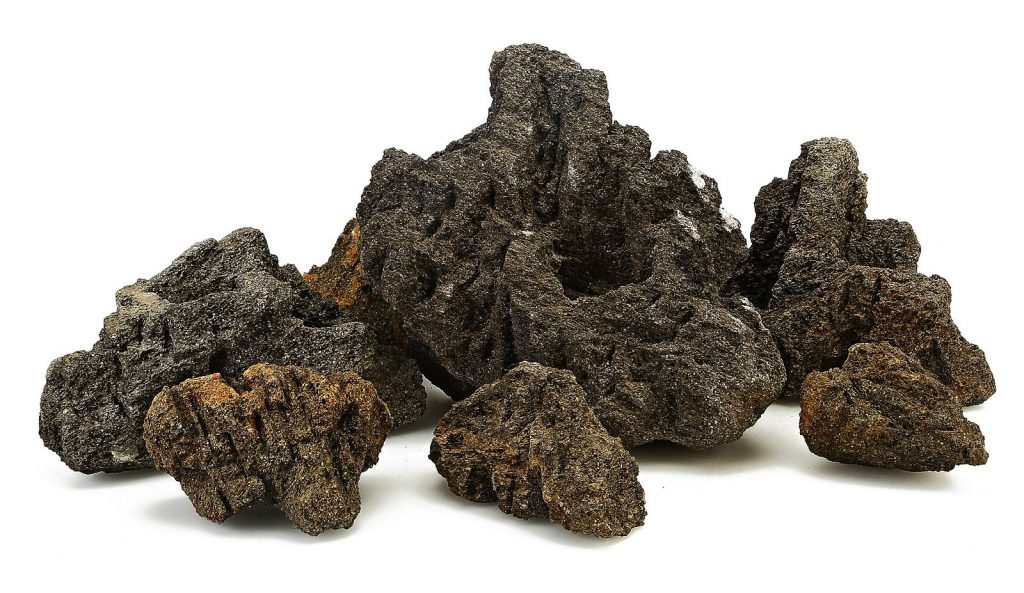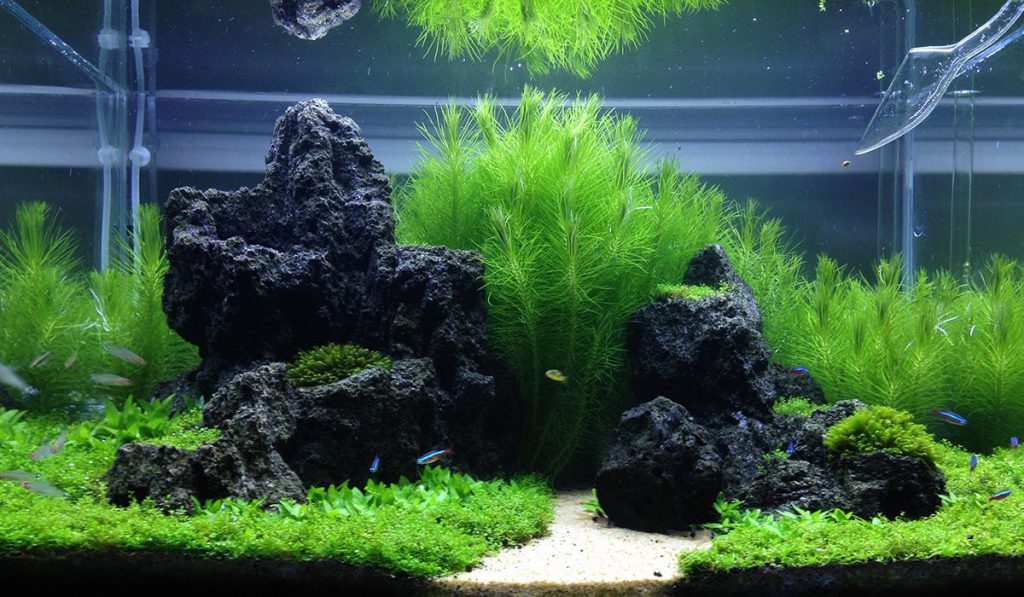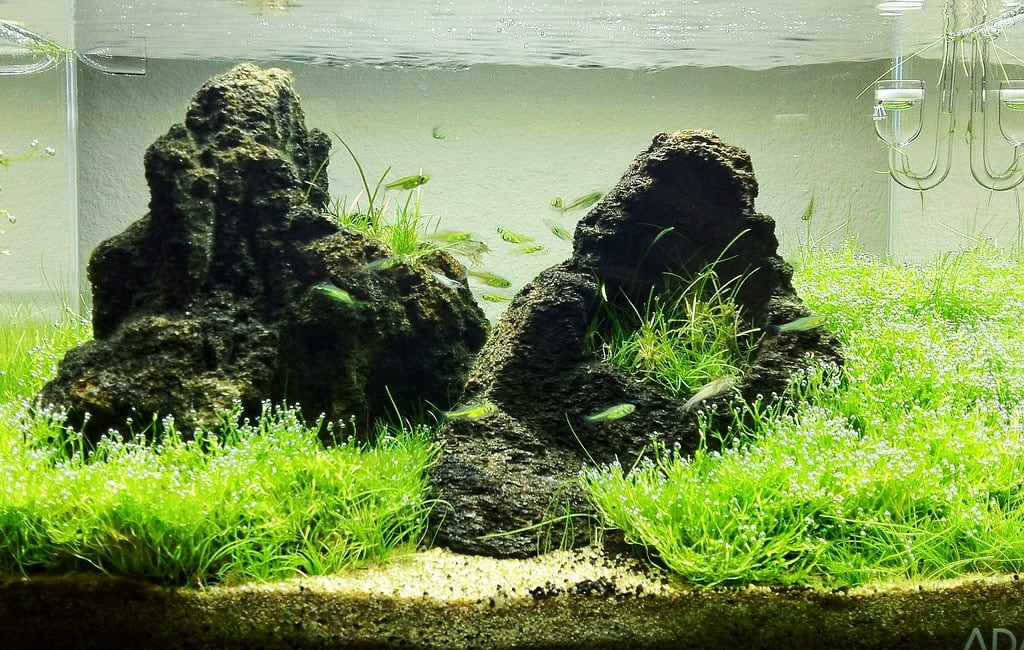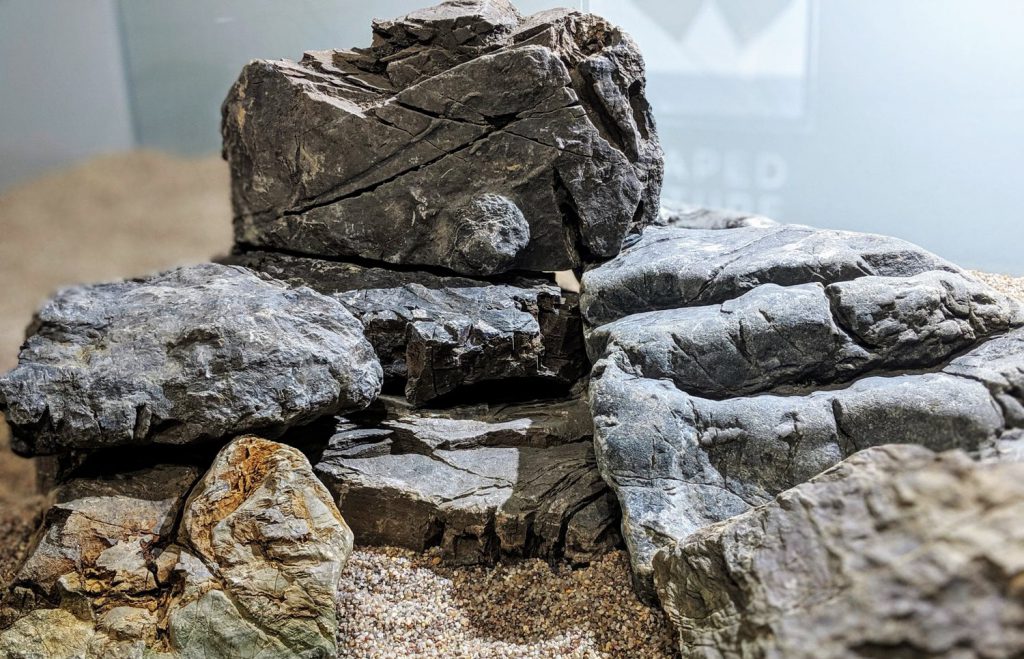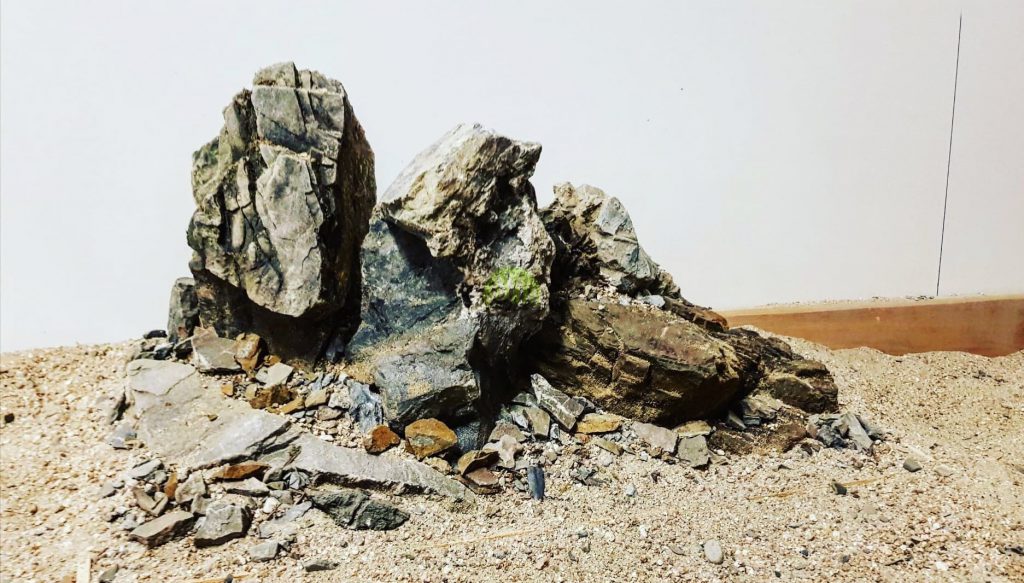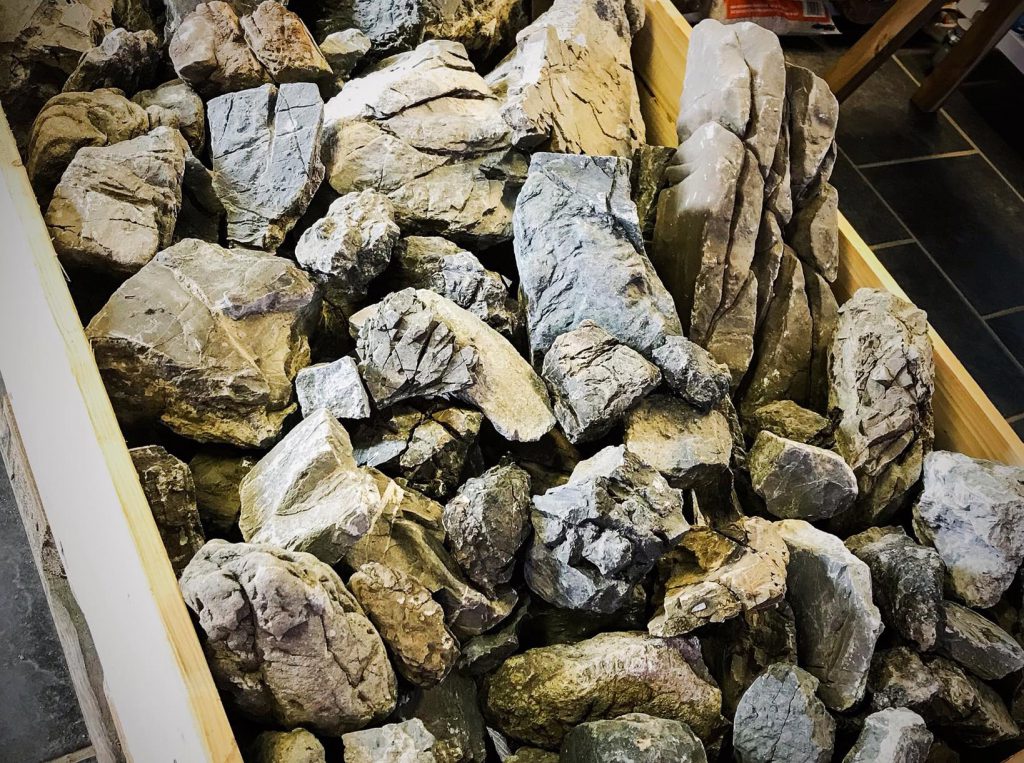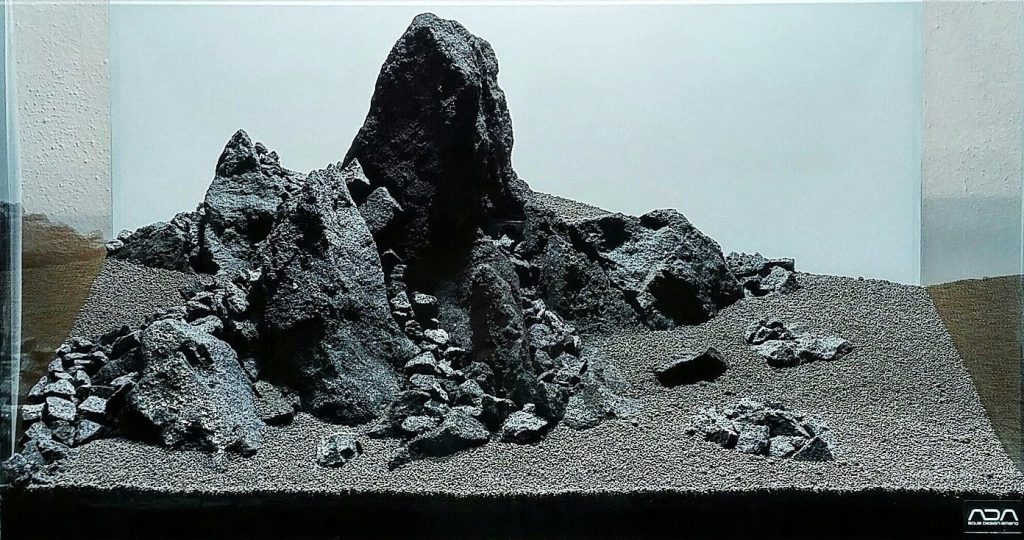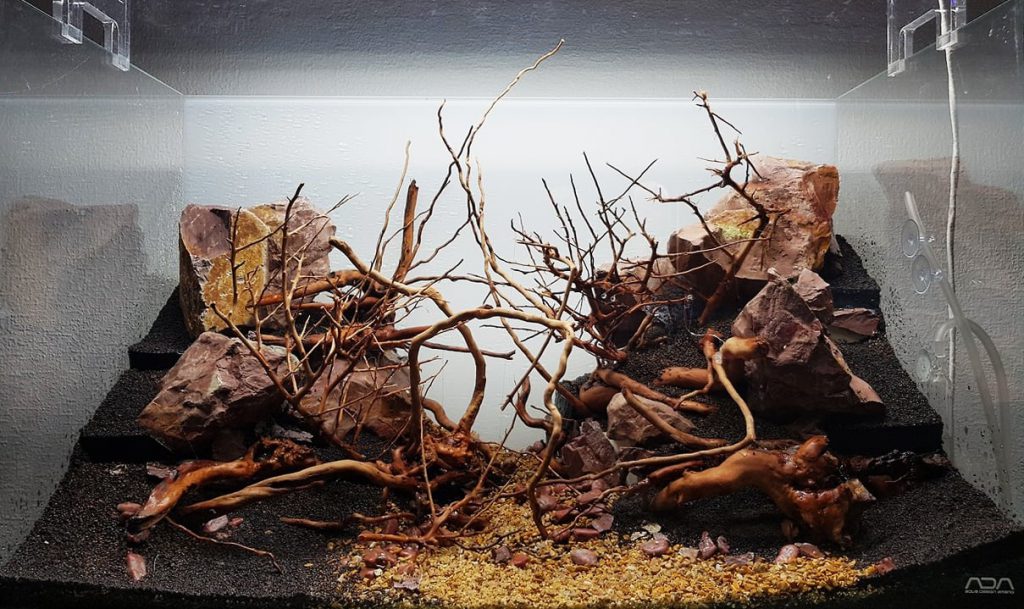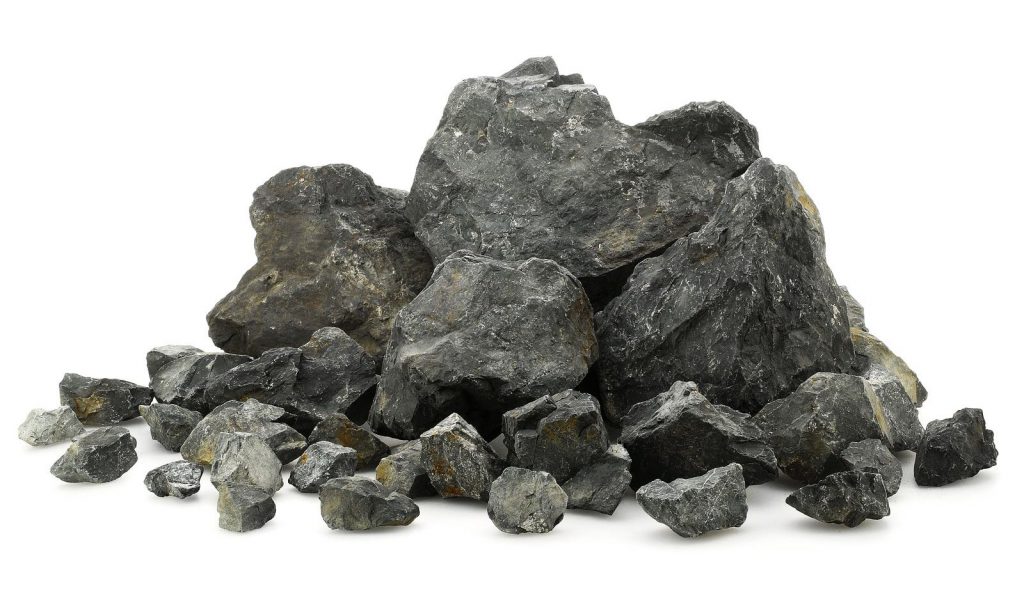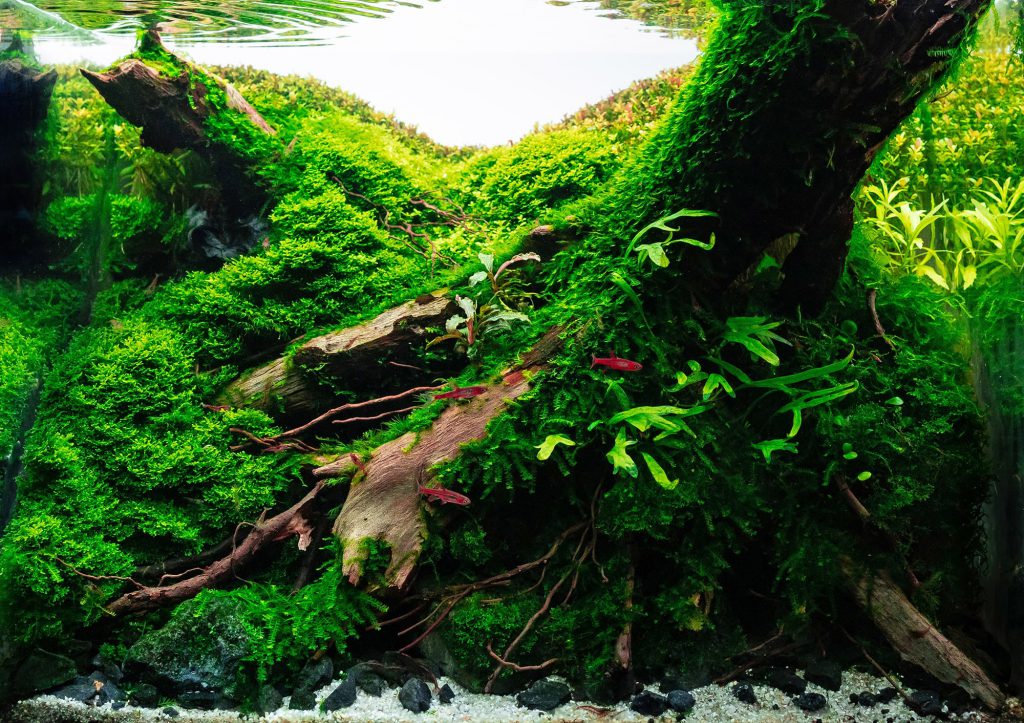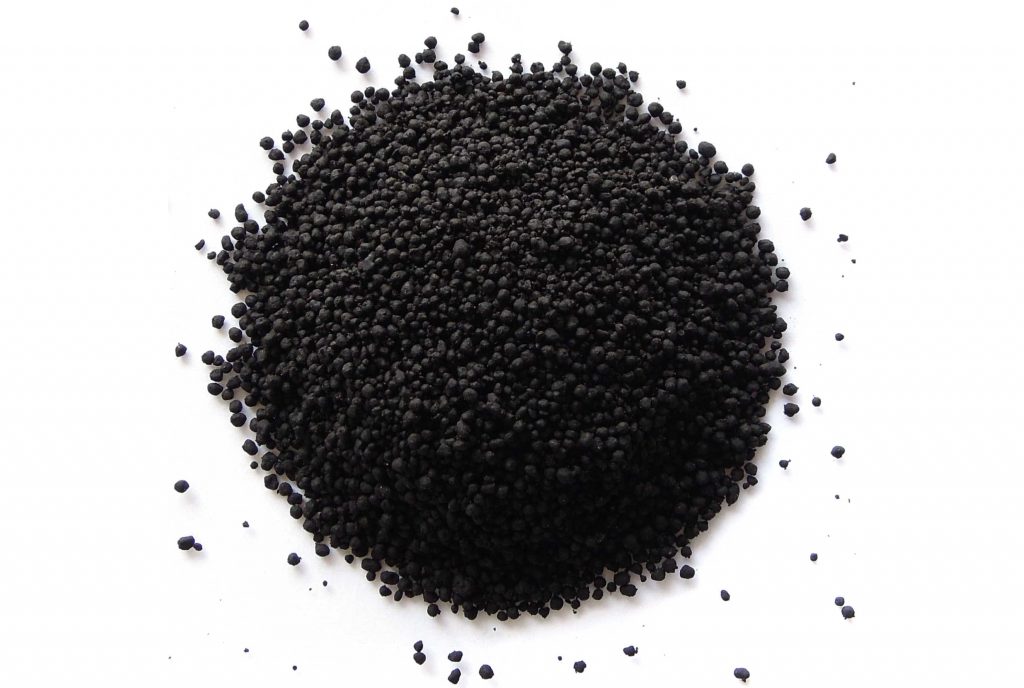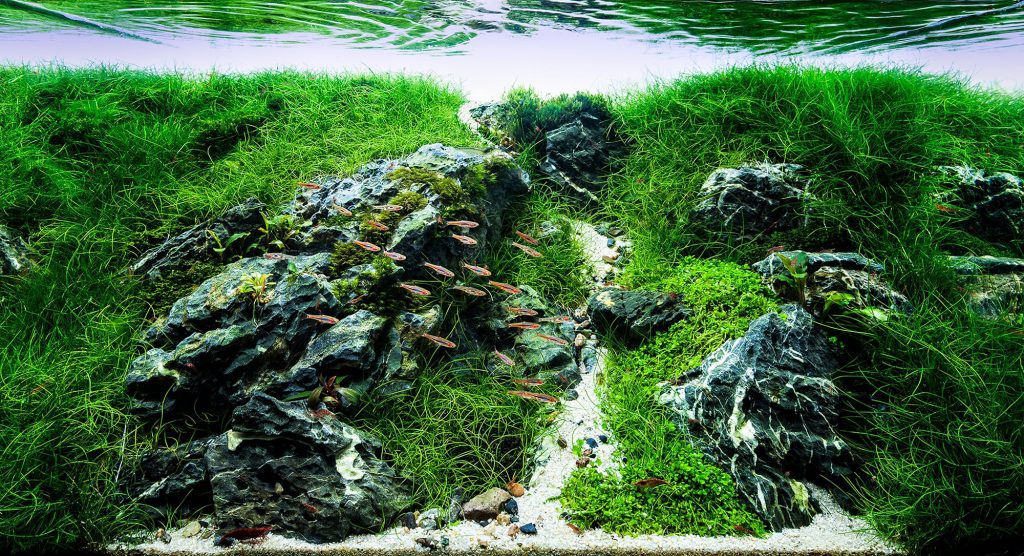
Aquascaping is the practice of using and mixing together a couple of natural elements in order to create an engaging scene. These elements are known as hardscape materials and they include driftwood, rocks and substrates.
A typical aquascape design starts with first placing a layer of substrate in the aquarium and then adding rocks and driftwood.
- Table of contents
- 1. Aquarium driftwood
- 2. Rocks commonly used in Aquascaping
- 3. Guide to Aquascaping substrates
- 4. Conclusion
What is Aquarium Driftwood?
Simply put, driftwood is wood that has been washed onto a shore of a sea, lake, or river by the action of winds, tides or waves. Driftwood is a term used in the aquarium hobby for many years but doesn’t necessary mean that if you want to gather wood for your aquascape, you have to have access to a body of water.
You can find wood suitable for your planted tank in a variety of environments. While going for a hike or visiting a forest you can come across various types of fallen branches.
When you spend the time choosing a great piece of driftwood to feature in your aquascape, you want it to look good. You are, however, not just choosing it purely for its aesthetic qualities.
Wood is a simple hardscaping item used to attach plants on which gives it a natural look. Some types of aquarium driftwood will also assist with lowering pH levels in your aquarium water. This might be a bad thing in the long run, depending on your tank’s inhabitants.
Driftwood makes your fish feel at home. Using driftwood in your aquascape helps in creating a replica of the natural environment where the fish are found in the wild. In their natural habitat, fish use driftwood to hide from predators, spawn their eggs and raise their offspring.
Once you have decided that you would like to add driftwood to your aquascape, you must make sure that the wood you use will be safe for your planted tank. The last thing you want after spending many weeks planning your aquascape, is to ruin it by adding a piece of driftwood that is not appropriate for aquariums.
Every individual piece of driftwood has its own unique aesthetics. There are quite a few types to choose from, either found by you in nature, or bought from your local aquascaping store.
Driftwood You Can Use in Aquascaping
From thin light-brown branches to more bulky dark-looking pieces of wood, there’s a big variety you can choose from. Aquascapers mostly use driftwood in their designs to replicate a rainforest theme. Mix it with rocks and you can create a great island scene in your planted tank.
Here’s the most common types of driftwood found in aquascaping today:
Malaysian Driftwood
This dark driftwood featuring linear shapes is collected from South-East Asia. Although many fish prefer the tea-coloured and acidic water, this type of driftwood is rarely used in aquascaping, because of its high rate of tannins release.
The Malaysian driftwood darkens and lowers the pH of the aquarium water. In order to avoid this, soak it in water for a period of 1 to 2 weeks, doing water changes on a daily basis. Once placed in the aquarium it will sink immediately.
Its a perfect driftwood to attach aquatic moss and other small plants to it, like Anubias nana.
Mopani Wood or African Driftwood
The Mopani driftwood found in aquascaping stores comes from the mopani tree (Colophospermum mopane). Also named butterfly, balsam or turpentine tree, it can be found in hot and dry regions from the far northern parts of southern Africa, specifically being native to Angola and Malawi.
It has similar properties to that of the Malaysian driftwood, lowering the pH of the aquarium water being one. Boil it before you put it in your aquarium so you can eliminate the pH lowering effect of the Mopani driftwood.
This driftwood is characterized by its twisted branches and two-tone coloring: light and dark brown. Being a favorite among aquarists, it’s lighter than the Malaysian driftwood but still dense and heavy, and also has the property of sinking rather than floating. This sinking property eliminates the trouble of figuring out how to weigh it down.
Sumatra Driftwood
Comes from dead mangrove trees or roots from Indonesia and Sumatra. After it’s collected from the wild, this driftwood is sandblasted in order to remove its bark, and then cut into smaller pieces.
Has a nice light tan color and it usually floats for a while before sinking. It releases small amounts of tannins into the tank’s water, in the first 2-3 weeks.
Manzanita Driftwood
A very popular driftwood used in Aquascaping today, manzanita is a common name for a couple of small trees or evergreen bushy shrubs (Arctostaphylos) in North America, being native to Texas, California, New Mexico and Oregon.
Unlike mopani or malaysian driftwood, manzanita doesn’t leach tannins into the aquarium water so no curing is needed when using this type of driftwood.
Just give it a good scrub and rinse and you’re good to go.
However, the big disadvantage with manzanita driftwood is that it floats so you have to figure out a way in which to anchor it in your hardscape layout.
Spider Wood aka Redmoor
Spider wood, also known as Chinese Azalea Root or Redmoor wood, is another great choice for your next aquascape. It’s a branchy tangled wood perfect for use in the Nature Aquarium. It has a light brown color, it’s smooth on touching and somewhat on a light side when it comes to its weight.
It requires a pre-soaking period of about 1 to 2 weeks before you install it in your aquascape. The redmoor can produce a non-toxic white film for a few weeks after adding it in the aquarium. It releases a small amount of tannins.
Saba Driftwood
This type of driftwood comes in a deep brown color and has a nice smooth finish, resembling the texture of a horn.
You can find it in stores looking like a stump with some branching.
Bogwood
Not exactly a type of driftwood, bogwood used to be popular in the aquarium hobby. Nowadays is difficult to find and once you find it you realise that it’s too expensive. Basically it’s wood kept in a bog under aerobic conditions, for long periods of time.
Gets stained with a brown color from all the organic matter found in a wetland.
Bogwood is known to release large amounts of tannins turning the water brown, so it’s best to cure it before using it in your aquascape.
Cholla Wood
Cholla wood is the skeleton of a cholla cactus (Cylindropuntia) after it dies. This cactus is native to northern Mexico and the southeastern USA and can grow up to a height of 4 metres (13 feet). Cholla is a soft wood that will release some tannins in your aquarium water.
It floats and usually takes 1-2 days to sink. We should note that this type of driftwood will break down in the aquarium over time. It can take between a couple of months and up to 2 years before that will happen.
Tiger Wood
Tiger wood is another great type of driftwood used in aquascaping. It has a growth that resembles a tree so that makes it a versatile piece of hardscape.
Upon placing it in the water it will float for a period of 1 to 3 weeks so it’s better to pre-soak it.
Pacific Wood
Pacific driftwood is similar to Malaysian driftwood in terms of texture and surface appearance. But its structure is more complex as it has more knots and twists.
It’s a dense wood that should sink after 2-3 days. Boiling it beforehand will ensure a faster sinking period. It lowers the pH a bit.
Bonsai Tree Wood
The Bonsai tree is composed of different small pieces of driftwood and is handcrafted my skilled artisans. This started a brand new trend in aquascaping: the tree-scape aquarium.
The manufacturing of a Bonsai tree can take up to 7 days to complete and stores today offer a wide variety and sizes. Some even come with plants attached to them, like Java Moss, Flame Moss, Anubias and Bucephalandra.
The wood found in the Bonsai tree usually comes from Malaysia, Vietnam, Singapore and other countries nearby in the Asia Pacific.
As with most driftwood, the Bonsai tree will also float in the beginning so to reduce its buoyancy, soak it in water for a couple of days. This also helps in reducing its tannin concentration.
Planted Driftwood
While this isn’t a type of driftwood in its own right, occasionally it is worth considering a piece of planted driftwood. Planted driftwood simply means any piece of driftwood that is sold with plants already attached to it.
Plants are easily attached to driftwood by using either biodegradable moss cotton thread that will dissolve in water over time, or aquarium-safe glue.
The most common plants that will be attached are the more hardy of aquarium plants that will generally thrive under most conditions in the aquarium, including an aquarium with low light. Plants such as Anubias plants, Java ferns, and a range of aquatic mosses are common.
Of course, once you get more skilled in aquascaping, this would become a common practice that you’ll easily do by yourself.
Safe and Unsafe: Make the Right Choice with Aquarium Driftwood
Generally speaking, if you purchase driftwood for your aquarium at a pet store it is most likely safe; do check though and if unsure have a chat with the staff about it.
When you collect driftwood for yourself, there is really no telling where it came from originally and the route it has taken to where you found it. One important thing to remember is that the wood has to be dead and as dry as possible. Avoid using driftwood you have found yourself unless you are confident you can make it 100% safe.
Digging through online forums and discussion boards we’ve found that people tend to agree that the following woody plant materials are generally safe to use in aquascaping:
- Alder tree
- Apple tree
- Beech tree
- Birch tree
- Cherry tree
- Hawthorn
- Heather
- Oak tree
- Pear tree
- Sycamore tree
On the other hand, the following types of wood are not suitable for your aquarium and some are even toxic to your fish and invertebrates, so it’s best to avoid them:
- Cedar tree
- Cypress
- Grape vine – it melts quickly in water
- Horse chestnut
- Lilac – toxic to fish
- Ivy – toxic
- Pine
- Spruce
- Walnut
Preparing Driftwood for Your Planted Aquarium
Whether bought from the store of found by you in nature, all driftwood must undergo a preparation process. This gets rid of excessive debris from the wood surface, reduces the tannins release and helps in making the driftwood sink faster.
How to Clean Driftwood
Wherever you have sourced your driftwood from, it is good practice to thoroughly clean it before placing into your aquarium. Using a clean brush, scrub the driftwood all over just using water to remove any dirt or dust that may be on it.
Do not use any chemical cleaner on your driftwood as the residue may harm your aquarium chemistry, killing plants and fish. The driftwood will now be ready to cure.
Curing Aquarium Driftwood
Some driftwood, such as the Malaysian driftwood and the Mopani wood sinks and will remain underwater. Other types of driftwood, however, will require some assistance to stay submerged. One of the most effective and simple, but time consuming, ways to achieve this is to soak the driftwood until it has become fully saturated.
This is achieved by soaking the entire piece of driftwood in water for as long as possible, 1 to 2 weeks is recommended as a minimum! Use a big bucket and make sure the piece of driftwood is completely submerged.
This soaking will also help to remove tannins from the driftwood. As mentioned earlier, these tannins, if left in the wood, will cause the water to go murky and give it a dark brown color.
The tannins will also lower water pH. When curing the driftwood, you will need to keep and eye on the water and change it once every 3 or 5 days. You will need to repeat this many times over the curing period. You will know that the driftwood is ready for you to use in your aquarium when the water is not tea-stained for several days.
Boiling Aquarium Driftwood
Many aquascapers choose to boil their driftwood and this has many benefits. Boiling driftwood is another way of removing the tannins and is much faster than the curing process.
The main reason why aquascapers will boil their driftwood however is to sterilize it. The boiling will kill any algae or fungus growing in the cracks and crevices of the wood. You will need to boil the driftwood for around 1 to 2 hours to fully sterilize it.
Even after careful preparation, driftwood can still release tannins and make the water brown. Using a chemical filter or activated charcoal can help to reduce this and clarify your aquarium water.
Rocks Commonly Used in Aquascaping
After driftwood, rocks are the 2nd most important hardscape element found in planted tanks. They help in building the foundation of an Aquascape and they’re the perfect items for creating mountain range themes in your Nature Aquarium. And most importantly, rocks are the main element in Iwagumi layouts.
The Beauty of Aquascaping Rocks
Many cultures and traditions place special affinity with rocks. Consider Easter Island and Stonehenge for example. Many in the Japanese culture in particular will search for great lengths of time (think years!) to find that one special rock that brings a ‘meditative mountain’ into their garden.
Other rock styles that are desirable include ones that suggest water features, natural forms, and natural scenes. Texture and shape have a big part to play in the hunt for the perfect rock. Aesthetics play a large part in the choice you make when it comes to picking out a rock for your next aquascape.
Types of Aquascaping Rocks
With the rise of popularity in aquascaping, an abundance of rock types emerged in aquarium stores. With the demand being at an all-time high, aquascapers can now find rocks with varied forms and textures.
All rocks come from nature, so the first thing you want to do before you place them in your tank, is to give them a good wash. A brush helps here with removing any additional debris or dust that accumulated in a rock’s crevices and holes.
The following are the most popular types of rocks found in aquascaping:
Seiryu Stones
Going by the name Ryuoh, these uneven aquascaping rocks are perfect for using in an Iwagumi Layout. Their form makes placing them in larger groups a particularly attractive choice in a scene.
The Seiryu are of a limestone origin and were Takashi Amano’s favorite rocks to work with. Their grey colour and form is reminiscent of huge and stunning natural rock formations and mountains; explaining why this rock form is so popular in aquascaping designs.
They unfortunately release carbonates in the water, raising the KH (carbonate hardness) and DH (general hardness) levels.
You can fix this issue by changing large amounts of aquarium water, in the first 1-2 weeks. If you can, refill the tank with demineralized water or water from a reverse osmosis system.
A more advanced solution would be to keep the rocks in a mixture of water and 25-30% hydrochloric acid (HCl), so that the carbonates with react faster. Leave them for 3-4 days so when you place them in the aquarium, the rocks will release a smaller amount of carbonates.
Tip: Don’t forget to use rubber gloves!
Ohko or Dragon Stone
This is a light, argillaceous rock that will not affect the water hardness in your aquarium. Some might say it’s made out of hardened clay. Originally found near seashores and lakes in Japanese regions, the multitude of holes in this stone was caused by water erosion.
Named after its scale-like texture, the Dragon stone is the 2nd most popular rock used in Aquascaping.
Aquascapers use it to create mountain ranges and other nature-inspired scenes.
The nooks and crannies found on this rock make the perfect spots for attaching small plants to it. Its eye-catching form, warm earthy tones and natural look make it an appealing choice for your next aquascape.
Grey Rocks or Elephant Skin
The Grey Rock is also called Dolomite limestone or Dolostone. This sedimentary rock is mostly composed of calcium and magnesium carbonate minerals, as well as sand and clay. Due to this composition it easily raises the water hardness in your tank.
In nature, it’s found in caves and caverns where water rich in magnesium flows through the rock sediments. A common location is the Dolomites Mountains in northeastern Italy.
These rocks have very natural-looking outer textures and work well in many aquascaping scenes. The rock’s attractive elephant skin-like texture it’s given by thousands of years of weathering and water erosion.
If you are looking for a larger, impressive rock to use in your scene, this could be an excellent choice.
Pagoda Stones
The Pagoda, or Sandstone, is a sedimentary rock, mainly composed of silica minerals (sand) and iron oxidized clay. It’s a dense stone that lacks porosity and has a very rough surface texture.
Can vary in colour from anthracite to brown and is a particularly aesthetically appealing stone.
The Pagoda stone gets its name from its form: when you look at a larger piece, you will see different layers as you do in a pagoda building.
Will slightly harden the water in your aquarium.
Manten Aquascaping Rocks
Originating from Japan, this is the ideal rock to use in an Iwagumi Layout. The Manten rocks come in many different color tones and have a rough rugged texture.
Because the rocks themselves resemble a mountain, they’re the perfect choice for building Nature Aquariums representing mountain range themes.
Manten stones have an inert property meaning they will not make changes in water parameters, being very safe to use in planted tanks.
You can find Manten stones in areas with high mountains around the world.
Koke Stones
Koke are volcanic rocks with a rough surface, angular shapes and sharp edges.
If you are looking for a rock that moss will easily attach to, and grow well on, then Koke are the rocks for you.
Ferns and Anubias are also well known to grow densely on these rocks.
Unzan Rocks
For a natural mountain landscape in your aquascape, Unzan are the rocks of choice. Found near dormant volcanoes in Japan, these lava rocks are cut into mountain shapes and generally have planting pockets and craters.
This makes them perfect when you are creating a natural natural mountain range theme.
Frodo Stones
Some might call Frodo stone a premium aquascaping rock, due to its scarcity, price and astounding looks. With its incredible details and grey-brownish color, this rock is highly sought after among aquascapers worldwide.
Similar to Seiryu and Manten rocks, the Frodo stone makes a great candidate to use in an Iwagumi layout.
Sansui Rocks
Like Koke rocks, Sansui are also of volcanic nature but have a more layered structure.
They’re surface texture is rough which keeps them in place in the aquarium, and you can easily attach moss to them.
Kei Stones
Kei stones have a pale pink look when they’re dry. Place them underwater and that’s when they’re true colors shine. Warm shades of ocher and various reds give out an amazing display within a planted tank.
They have sharp edges with an angular structure and do not raise the water hardness.
Yamaya Stones
The Yamaya stones are collected from many valleys of Japan. Has a dark gray color and it’s usually used as a filler stone. This makes it have a secondary role within an aquascape.
You can position this stone between other bigger rocks, in the foreground or even inside driftwood.
The Relationship Between Driftwood and Rocks in an Aquascape
As with everything in Aquascaping, a lot of the work is in the planning. Decide where you would like to place your driftwood and consider how the feel of your aquascape will change depending on the orientation and positioning of the driftwood.
Take your time to work on different design layouts. Drawing rough sketches to help you visualise how the final piece might look will definitely help.
Once you have planned for where your driftwood is going, chosen your feature piece, and prepared the driftwood, it will be time to place it in your aquarium. Refer to your notes and plans to make sure it is placed exactly where you planned it to go.
Add aquarium water gently when refilling after placing a new hardscaping material. This whole process takes time and patience, but will be well worth it when you step back and admire your aquascaping art.
This is a stunning example of how to use a feature piece of driftwood. Look at how the wood has been placed according to the Rule of Thirds and how it creates the illusion of movement.
The use of moss on the driftwood and the angles that the rocks and pebbles have been laid at, really capture the look of a natural environment that the aquascaper was trying to achieve.
Choosing this piece of aquarium driftwood creates the look of a grand root reaching out into a river. The fish choice really works with this design to enhance the scale and depth of the aquascape.
Guide to Aquascaping Substrates
Substrate refers to the material you choose to use on the bottom of your planted tank. You choose it not only for its aesthetic features but also for its rich nutrients which help plants grow healthy and stronger roots.
We’ll group substrates into 2 main categories: inert substrates and active or nutrient-rich soils.
Inert substrates include sand, gravel and baked clay. These types are chosen mostly for their aesthetic qualities.
Nutrient-rich soils, or aquasoils, are substrates that contain a high amount of organic matter. This matter slowly decomposes in water, releasing useful nutrients for efficient plant growth.
Sand and Gravel
Sand and gravel have been used for decades in the home aquarium. They are graded by size and mainly used in aquascaping to emulate scenes found in nature.
When similar rocks, stones and gravel are combined, the scene is brought together and becomes whole. This gives the design the feel of the Nature Aquarium that Amano found so appealing.
With the planted aquarium, the choice of sand and gravel take on an additional role: that of plant support. Not just visual, but also practical.
There is a great variety of sand and gravel you can use in your aquascape. You can pick from different colors and grain sizes.
Regarding grain size, it’s important to note that superfine sand won’t work well in a planted tank. This type of substrate will compact easier, having a negative impact on your plants’ roots.
Compacting makes the gas exchanges difficult between the substrate and water column.
This, in turn, leads to anaerobic pockets: trapped waste decomposing in an oxygen-free environment. Dangerous gases are then being released which can be deadly to your aquarium’s inhabitants.
Larger grain sizes have their own disadvantages. They’ll not hold in place small plants with tiny roots.
The optimal solution is somewhere in the middle. It’s commonly agreed upon that the best grain size to use is between 1.5 and 2.5 mm.
Nutrient-rich Substrates
These types of aquarium substrates are used because of their beneficial values towards aquatic plants. They have a high nutritional load which helps in promoting healthy plant growth (roots).
They have a big disadvantage though. Their useful nutritional value depletes with time (years) and so the whole substate needs to be replaced.
Nutrient-rich substrates include:
Topsoil
This is the dirt from your garden, mixed with sand and/or gravel, clay and other organic matter.
Potting soil
Regular soil mixed with peat, sawdust, bark and other organic additives.
Aquasoil or Aquarium Soil
This is by far the most popular nutrient-rich substrate used in aquascaping. It’s basically regular soil which has been baked and then transformed into granules. You can find aquasoils in a variety of grain sizes and brand names.
How Aquasoils Affect Water Chemistry?
Because of their high organic content, some aquasoils release ammonia (NH3) into the water. Plants use the beneficial nitrogen found in ammonia for optimal growth.
In acidic water (pH below 7), ammonia turn into ammonium (NH4+), which is known to be harmless for fish. This takes time though, so it’s better to wait a couple of days before stocking your aquarium with fish.
Aquasoils will also lower the pH level in your tank, to around 6.5 – 7. That’s the optimal value to have for a sustainable aquatic life.
Another important thing to know about aquasoils is their role in altering the water’s buffering capacity. It’s the way they interact with your water’s KH (carbonate hardness). Most aquasoils will deplete the KH value which is not exactly a good thing.
With the KH closer to 0, the pH will also drop considerable. A lower KH value will generate sudden pH swings, which can put a real stress on fish and especially invertebrates (shrimp).
Cation Exchange Capacity (CEC) Value
This refers to the substrate’s ability to retain a variety of positively charged ions, called cations. These include Calcium, Magnesium, Potassium, Iron, Zinc and others, which are binded by the negatively charged particles found in the substrate’s organic matter.
Plants use these beneficial elements and turn them into nutrients for optimal growth.
The higher the CEC value of a substrate, the more nutrients it can hold, making them readily available for plant life.
Aquasoils and other nutrient-rich substrates have the highest CEC value, of around 60 meq/100g (millequivalents per 100 grams of soil). On the other end, sand and clay have the lowest CEC values, between 1 and 5 meq/100g.
Using Aquarium Substrates in Aquascaping
Depending on the type of aquascape you want to create, there are basically two options to consider when it comes to substrates.
For Iwagumi, where small carpeting plants are being used, aquasoil seems to be the perfect choice. The plants will cover the entire bottom of the tank leaving no sight of the soil. So in this case, there’s no design considerations regarding the substrate choice.
The best substrate setup in the Nature Aquarium style involves both inert and nutrient-rich layers.
Aquasoil is placed first, as a bottom layer, which is then capped with sand and/or fine gravel. Keep a ratio of two parts aquasoil to one part sand and gravel.
Creating Slopes Using Substrates
When planning an aquascape aquarium, slopes have a big part to play in the texture and visual dynamics of the finished design. Gone are the days when planted aquariums were characterized by a flat bottom.
Now, especially following in the footsteps of Takashi Amano, the trend is for great slopes and sweeping changes in the height of an aquascaping scene. This creates the illusion of scale, depth and movement within your aquarium.
A decent depth of substrate also allows for your main pieces of rock or driftwood to have a great support. Stem plants will root much more quickly and easily when it has a deep substrate to root in.
When creating slopes inside your tank, the level of the substrate in the back is generally higher than in the front. Take this into consideration when calculating your substrate quantity needs.
How Much Substrate do I Need?
Well, it depends. There is a simple formula you can go by, but it’s always best to have more than necessary. Think of small changes in your hardscape, which will generate areas that need to be filled with extra sand or gravel.
Here’s a basic formula to help you find out how much substrate is needed when planning a new aquascape (in liters):
Aquarium Length (cm) x Aquarium Width (cm) x Substrate Depth (cm) / 1000.
When you plan to have an uneven bottom (a slope), calculate your depth by adding your highest level to your lowest and then multiplying that by two.
For example, let’s say you’ll have 15 cm of substrate in the back and 5 cm in front:
15 + 5 / 2 = 10 cm
Here’s a good online calculator to further help you with this:
Substrate requirements calculator
In Conclusion
Did you made it so far? Congrats! Kudos for you.
We know, there’s a lot to take in. But with many things in aquascaping, it’s all about trial and error.
You just have to get your hands dirty (literally) and start creating!
Pick that piece of wood from your backyard, experiment with different types of rocks and last, but not least, try out a couple of substrates and see how they influence your plant growth.
In the end, it’s all about creating a unified and visually appealing aquascape design which will give you tons of satisfaction while making your friends and peers jealous :).
Was this helpful for you? Let others learn about aquascaping elements by sharing this article with them.

